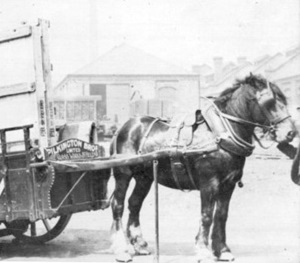The Story of Pilkington UK
The company was founded by John William Bell and five other local men in 1826 under the name St. Helens Crown Glass Company. In the early seventeenth century the introduction of coal-fired furnaces in glass-making had caused most glass-production to be in the North East of England where most of the coal mines were located. The first glass-making furnace in St Helens was built by 1700, so by the time St Helens Crown Glass Company was established there was already competition up and running.
The company was established with the technical knowledge and ability of J. W. Bell plus capital from three of the most influential local families: the Bromilows, the Greenalls and the Pilkingtons. In 1827 production started at Grove Street, St. Helens. The former Pilkington UK Headquarters can still be seen at this location.
 In 1828 J. W. Bell sold his share of the company to Peter Greenall, James Bromilow, William Pilkington and a John Barnes. Since Bell had the technical knowledge of glass making and had kept the success of the works consistent, the loss of him looked damning for the company. But the partners felt too invested to give up, so kept on investing sums of money. William Pilkington took on Bells role and became very involved in the company’s day-to-day activities, using the knowledge he’d learned from J. W. Bell.
In 1828 J. W. Bell sold his share of the company to Peter Greenall, James Bromilow, William Pilkington and a John Barnes. Since Bell had the technical knowledge of glass making and had kept the success of the works consistent, the loss of him looked damning for the company. But the partners felt too invested to give up, so kept on investing sums of money. William Pilkington took on Bells role and became very involved in the company’s day-to-day activities, using the knowledge he’d learned from J. W. Bell.
William’s elder brother Richard started to invest in the company, with William acting on his behalf in decisions. After some ‘differences’ arose between William Pilkington and James Bromilow in 1829, James Bromilow left, and John Barnes followed him with this move. This was due to William discovering that James had not been keeping the accounts properly and had been missing sums of money off the books.
This left St Helens Crown Glass Company with William and Richard Pilkington and Peter Greenall as remaining shareholders, so they renamed the company “Greenall & Pilkington” in 1829. After the withdrawal of Peter Greenall in the early 1840s, William and Richard Pilkington acquired the company. In 1849, it was officially renamed Pilkington Brothers.
Notable events following 1849:
- Late 1800s – Siemens furnaces developed by William Windle Pilkington (son of founding brother Richard) which allowed continuous molten glass flow, rather than the intermittent pot method. He also developed more efficient lehrs (the furnace used for cooling, or annealing glass), reducing annealing time to hours rather than days.
- 1894 – Pilkington Brothers became Pilkington Ltd.
- 1901 – Pilkington UK became the only British manufacturer of plate glass after buying the first plate glass works built at Ravenhead
- 1927 – Baron Harry Pilkington joined the company.
- 1945 – Sir Alastair Pilkington was offered a position within the company.
- 1949 – Baron Harry Pilkington was appointed chairman of the company. Sir Alastair Pilkington was appointed as production manager at the plate works in Doncaster.
- 1951 – Pilkington UK bought out its last remaining UK competitor, Chance Brothers. The Chance Brothers were responsible for Paxton’s glass house in Chatsworth (demolished in 1920) and Crystal Palace in London (destroyed by fire in 1936). Alastair Pilkington returned to a post in St Helens.
- 1953 – Baron Harry Pilkington knighted.
- 1957 – Cowley Hill 1 (CH1) is chosen to be the pilot plant for float glass production and is converted from plate glass production to float.
- 1959 – The float process was announced to the glass-making world.
- 1968 – Baron Harry Pilkington created a life peer, taking the title of Baron Pilkington.
- 1981 – UK5 opens with 400 employees, a number which was considered small for the task of float glass production; however the advancement in technology led to the reduction of people required on the factory floor.
Information sourced from The Glassmakers by T. C. Barker and Float: Pilkingtons' Glass Revolution by D. J. Bricknell and in-house.